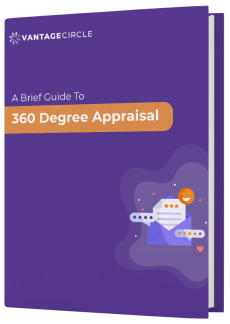SMART Goals For HR professionals- A Quick Review With Examples

The concept of SMART Goals is probably already familiar to you. They're specific, measurable, achievable, realistic, and timely goals. But how does this idea apply to HR?
HR departments have different functions, including hiring new staff, managing employee performance, training, development, improving culture and employee experience, succession planning, compensation, and benefits.
As an HR professional, it is essential, to sum up, all your priorities about the organization and its employees in one word: balance.
It would be best to decide on the company's needs and preferences and the employees' needs and objectives. Then you are charged with seeking the middle ground that suits both sides. For HR practitioners, this is the core of all Smart Goals.
It is important to set SMART HR professional development goals because it gives you a framework of action plans for achieving milestones in the work you do. They give you a time frame, with a long-term view and quick inspiration to produce concrete results that can show how the organization is supported and developed by HR.
Examples of SMART Goals for HR Professionals
1. Talent Acquisition
It is time to take a step back, review your achievements in talent acquisition, and set new recruitment targets. Hiring managers need to make time to keep up with the evolving trends as static recruiting methods make way for smart goals. Keep the recruiting game healthy by setting the right targets for 2021.
Here is one of the examples of SMART Goal for HR Professionals in Talent Acquisition.
Smart Goal
To increase the percentage of active job openings filled during the expected deadline from 45% to 55% in 2021.
Specific: Increase our hiring process in 2021.
Measurable: To 55% in 2021.
Attainable: From 45% in 2020 to 55% in 2021.
Relevant: To maximize hiring effectiveness, reduce cost-to-hire, and hire star players.
Timely: From 2020-2021
2. Talent Retention
For most organizations, talent retention is hard; many don't even have a retention strategy or goal. Especially when you consider the record-low levels of unemployment and the ongoing battle for talent, employee retention is a significant concern.
Listen to our podcast on: Talent management - How to recruit and retain your best employees?
Here is one of the examples of SMART Goal for HR Professionals in Talent Retention.
SMART Goal
To better retain our existing talent and save on the costs associated with new hires, you want to increase our current annual retention rate of 45% to 65% by 2021.
Specific: Reduce our annual retention rate
Measurable: to 65% by 2021
Attainable: from 45% in 2020 to 65% in 2021.
Relevant: to better retain existing talent and save on the costs associated with new hires
Timely: From 2020-2021.
3. Revamp Employee experience
One of the critical goals of any organization that wants to thrive is recruiting and retaining the brightest and best. As an HR professional, you must help the company accomplish this objective by preserving employee experience at a high level. You should ensure that the new and existing staff are happy to work with the organization to don't look around for other opportunities.
Here is one of the examples of SMART Goal for HR Professionals in revamping employee experience
Smart Goal
To increase the percentage of employees who exhibit higher engagement levels from 40% to 50% in 2021.
Specific: Boost employee experience with rewards and recognition.
Measurable: To 50% in 2021.
Attainable: From 40% in 2020 to 50% in 2021.
Relevant: Companies with better employee experience report 22% higher productivity, according to Gallup.
Timely: From 2020-2021.
4. Strengthen the Feedback Structure
In this competitive business age, why is it essential to concentrate on an effective feedback structure?
Only 10.4% of employees whose manager's feedback left them with negative feelings are engaged, and 4 out of 5 say they're actively or passively looking for other employment.
There are apparent bad implications of giving feedback in the wrong way. Whereas providing inspirational feedback is worth the time and effort. It keeps employees satisfied, which in turn helps you improve your organizational productivity.
Here's one example of SMART goals for HR professionals related to employee feedback.
Smart Goal
To increase sales from 20% to 30% in 2021 by eliminating ambiguity and misunderstanding through proper feedback.
Specific: To improve sales performance
Measurable: By 20% in 2021
Attainable: From 20% in 2020 to 30% in 2021.
Relevant: Employees should feel their work is meaningful and contributes to the organization as a whole.
Timely: Quarterly feedback to employees.
5. Boost Company culture
Just 27% of employees strongly agree they believe in their company's values, and 23% of employees strongly agree they can apply their organization's values to their work every day.- Gallup Analytics.
Employees with a good company culture exhibit higher levels of commitment. Committed workers are, again, more likely to recommend their organization to friends.
Listen to our podcast on: How leaders can communicate a company's culture to employees
Here's one example of SMART Goals for HR professionals to boost company culture
Smart Goal
Increase the percentage of workers who express we have a positive work environment from 75% in 2020 to 80% in 2021.
Specific: To maintain a positive, values-based work environment.
Measurable: Increase the percentage of positive employee feedback from 75% to 80%.
Attainable: From 75% in 2020 to 80% in 2021.
Relevant: To make the majority of the employees live the values of the organization.
Timely: Quarterly workplace survey.
Few other examples of SMART Goals for HR Professionals
- Reduce churn rate by 20% by the end of the year.
- Increase the review completion rate by 15% in the next quarter by streamlining the review process.
- Boost the number of employees achieving their targets by 20 percent in the next six months by providing training classes.
- Increase the number of available development training programs in the next quarter by 30%
- Increase the participation in team-building activities by 15% in the next quarter by permitting more flexible workshop schedules.
Read our blog on: 10 Best Virtual Team Building Activities for Remote Employees
- Achieve over 80 % internal satisfaction with HR systems in the next six months by efficiently sharing the workload through our regular discussions.
- Minimize time on administrative tasks by 30% in the next six months.
Wrapping it up with 3 tips on personal SMART Goals for HR Professionals
- Learn about the HR industry's ecosystem before you do something else and find out what resources are available.
- After you have understood everything you can about HR's broad topics, you should know whether you want to be a generalist HR personnel or a specialist in one or two fields.
- Once you have determined if you wish to be a generalist or a specialist, you should look for more educational opportunities, including workshops and seminars, and gain more and more experience in your profession.

Vantage Circle is a simple AI-powered Rewards & Recognition Platform for upgrading your employee experience and engagement for better productivity.





